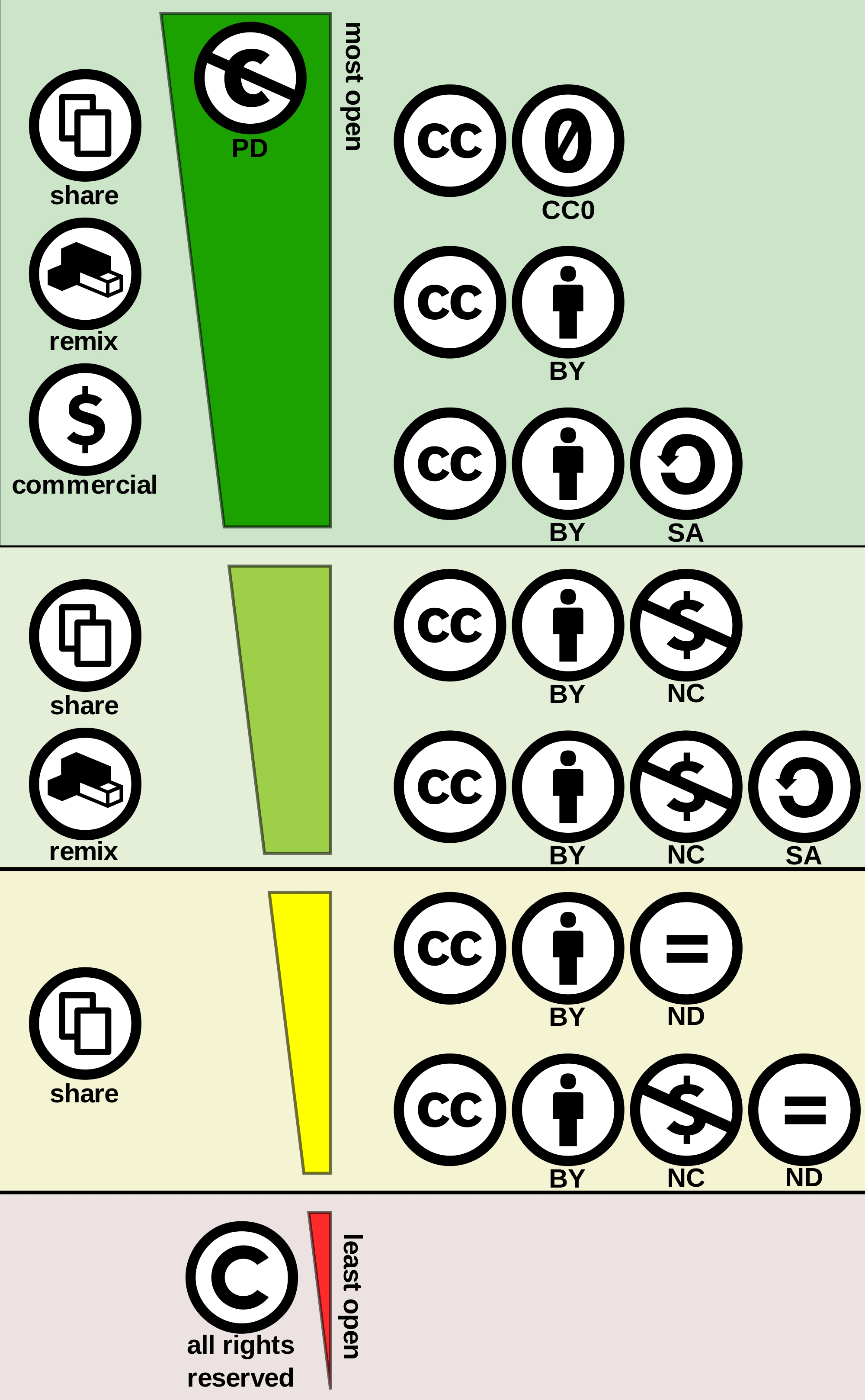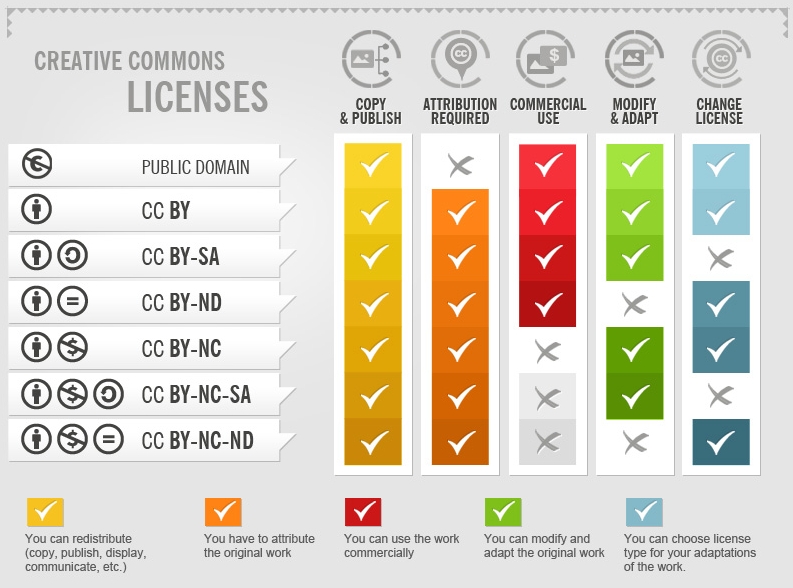What to Consider?
WHAT ARE WE TALKING ABOUT?
When using material or information from others' sources one needs to be aware of the legal implications.
Am I allowed to use this image and make it publicly available? Which rights are reserved? Am I allowed to modify the material? Under which license should I publish my own material?
Copyrighted material
The permission to use copyrighted material ("All rights reserved") is regulated by law and very limited. For example, up to 15% of copyrighted work can be made available in an online course (e.g. moodle), if access is limited through a password. In general, it is not only necessary to specify the source and correctly attribute the content to the copyright owner (author, publisher), but also to obtain explicit permission and, usually, to pay for reuse of material in any kind of publication.
However, this section does not aim to explain copyright law. The corresponding sections of the German law text can be found here. Introductory information about image (copy)rights in teaching is provided on OpenRUB here, here and here (all German). There exist ways to work around these issues that are described in the following paragraphs.
PUBLIC DOMAIN AND CREATIVE COMMONS LICENSES
Materials created prior to introduction of copyright or whose copyright has expired are in the Public Domain (PD). There are in general no restrictions to utilization of such materials and no attribution needs to be made. Some works that are, for example, considered part of general knowledge are not covered by copyright and are therefore in the PD. Creators can also waive their copyright and dedicate their works to the PD by explicit declaration ("No rights reserved" - CC0, see below).
Creative Commons (CC) is a non-profit organization that offers pre-authorized license agreements to help copyright owners share copyrighted content ("Some rights reserved"). CC licenses offer a clear and convenient way of sharing a creation by, at the same time, defining and indicating the extent and circumstances of (re)use, (re)distribution and modification/adaptation. By this, a regulative framework for open practices such as OER is provided. Click here (English) or here (German) for further information. This more open way of copyright licensing is sometimes referred to as copyleft.
The following images give an overview of the CC licenses with their sub-components enabling graded permissions which will be explicated in the paragraphs below. At the same time, they serve as examples of appropriate attribution practices for CC licensed work as outlined here and in the following.

Image: Creative commons license spectrum by Shaddim, CC-BY 4.0; original CC license symbols by Creative Commons, CC-BY 4.0
With the help of CC licenses copyright owners can share their works either without any restrictions for further utilization ("No rights reserved" or "All rights waived" - CC0) or by determining that "some rights are reserved" as specified through certain combinations (see images above/below or here) of the following components:
- Attribution (BY): The work needs (at least) to be attributed to the creator explicitly (included in all licenses except CC0).
- Share alike (SA): New work reusing or incorporating the work needs to be released under the exact same license terms (CC-BY-SA is equal to copyleft).
- NonCommercial (NC): The work can be used for any purpose except a commercial one.
- NoDerivatives (ND): No modifications to the original work are allowed without explicit permission.
The specific combinations of the CC licensing elements as well as the corresponding permissions and restrictions are presented in the images above.

Image: Foter.com_infographic_CC.jpg by Foter, CC-BY 4.0 / cropped from original
TIPS FOR LICENSING YOUR OWN RESEARCH(MATERIALS)
-
If you would like to require that those reusing your research give you credit, you should use an Attribution condition.
-
In Creative Commons licensing, if you do not want to require attribution, you should consider making your research public domain or CC0 (see below).
Consider public domain
- Evaluate whether you need control on reuse
- Evaluate how to maximize reuse and impact of your research
- Consider using community norms rather than legal measures to control reuse
TOOLS THAT ASSIST IN CHOOSING THE LICENSE FOR YOUR WORK
- Choose a License (from creativecommons.org)
- choosealicense.com (for software and other works)
- Public License Selector (for software and data)
